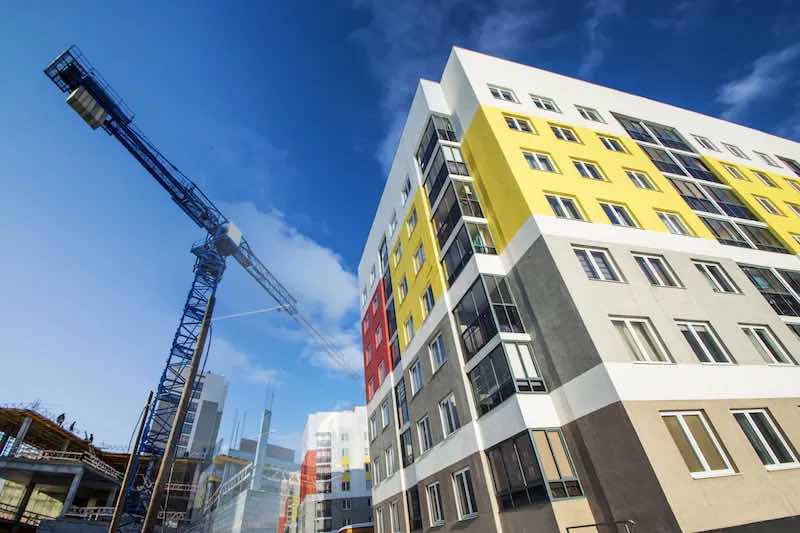Mathew Reed, Policy Manager at the affordable housing advocacy nonprofit SV@Home, says that compared to neighboring cities, Milpitas is in a good position to meet the state’s requirements because of planning and rezoning work it has done in the past few years. However, permitting enough affordable housing could still be a challenge, Reed says. “The city is going to have to lean in to figure out how to support deeper levels of affordability, and that means supporting stand alone affordable housing projects in the city,” Reed said.[spacer height=”20px”]
BY: Grace Hase┃The Milpitas Beat
PUBLISHED: May 25, 2021
After falling behind on its state-mandated housing goals, the city of Milpitas will need to permit more units than ever before in the coming years.
Preliminary numbers from the Association of Bay Area Governments (ABAG) suggest the Silicon Valley suburb will need to approve 6,713 homes –– 2,655 of them affordable –– between 2023 and 2031.
The housing goals are crafted using a methodology called the Regional Housing Needs Assessment, or RHNA (pronounced “ree-na”). Every seven to eight years, the state uses the process to decide how much housing, both market-rate and affordable, needs to be built in different regions across the state.
For the current RHNA cycle, which runs from 2015 to 2023, the state expects Milpitas to permit 3,290 homes, with 1,574 of them designated as affordable. But while the number of units permitted through 2020 has put the city roughly 700 homes from its goal with two years to go, a disproportionate number of those permitted –– 95 percent to be exact –– are market rate housing.
Mayor Rich Tran told The Beat that he questions whether it’s “realistic” for the Milpitas City Council to approve 6,713 homes in the next RHNA cycle.
“I understand where they’re coming from and the need for housing in California, but I think there’s a lot of challenges to approving that number of housing units,” he said. “I think that comes down to real estate developers and whether they want to develop housing.”
City Manager Steve McHarris said the city added a “significant” amount of housing to its affordable and market rate supply in recent years. However, a review of housing production numbers from 2015 to 2020 found the council had permitted 142 affordable units –– only 9 percent of its state-mandated goal for affordable housing.
“Milpitas is one of the rare cities that has exceeded its market rate RHNA goals for the past 13 years,” McHarris told The Beat. “However, given that Milpitas has added more housing than many of our peer cities, in the future we do need to be mindful about maintaining a good jobs and housing balance for our long-term fiscal health.”
Mathew Reed, a policy manager at the pro-housing nonprofit Silicon Valley at Home, says that compared to neighboring cities, Milpitas is in a good position to meet the state’s requirements because of planning and rezoning work it has done in the past few years.
However, permitting enough affordable housing could still be a challenge, Reed says.
While the city has an inclusionary housing policy, which requires developers of projects with 10 units or more to designate 15 percent of the units as affordable, Reed says that won’t help add to the supply of very low and extremely low income housing.
The California Department of Housing and Community Development defines extremely low housing as affordable at 30 percent of the area median income and very low housing as affordable at 50 percent of the area median income. In Milpitas, that’s an annual salary of $47,350 and $78,950, respectively, for a family of four.
“The city is going to have to lean in to figure out how to support deeper levels of affordability, and that means supporting stand alone affordable housing projects in the city,” Reed said, while noting the city doesn’t always have the funding to do so.
McHarris says that most of the new housing will likely be built in areas defined by the Metro Specific Plan –– 437 acres in the southern part of the city surrounding the BART station –– and the Gateway Specific Plan, which encompasses Main Street and the midtown section of the city. Updates to both plans are still ongoing, and McHarris said the city will continue identifying specific sites for housing throughout the process.
The city is also considering parcels it owns on South Main Street as a spot for affordable housing.
Before ABAG finalizes its allocation later this year, cities will have the opportunity to challenge the numbers. In Santa Clara County, the Palo Alto City Council decided last week to appeal the allocation, which some council members have called “aspirational.”
For now, McHarris said that Milpitas doesn’t plan on challenging its allocation. However, the city manager said they were concerned the state’s goals are “ambitious” and don’t come with “associated funding or tools that cities need to be successful in meeting these numbers.”

